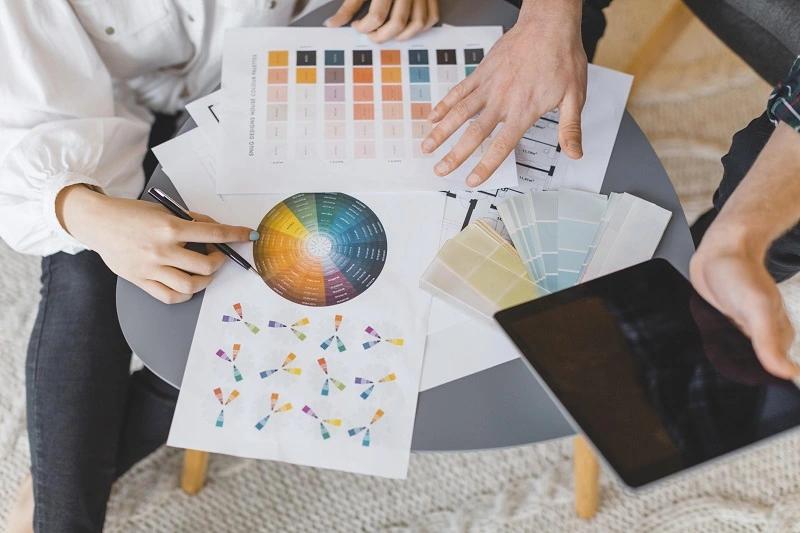
The Power of Color Psychology in Design
Color is a powerful tool in design. It can evoke emotions, convey meanings, and influence behavior. As a designer, understanding color psychology can help you create more effective designs that resonate with your audience.
What is Color Psychology?
Color psychology is the study of how color affects human behavior and emotions. It is a branch of psychology that explores the impact of color on our moods, feelings, and behaviors. Colors can evoke different emotions and have different meanings depending on cultural and personal associations.
For example, the color red is often associated with passion, love, and danger. Blue is often associated with calmness, trust, and intelligence. Green is associated with nature, growth, and money. These associations can vary across cultures and individuals.
The Power of Color in Design
Color plays a crucial role in design. It can make or break a design. Choosing the right colors can help you communicate your message effectively and create a strong visual impact. Here are some ways color psychology can be used in design:
1. Branding
Color is a crucial element in branding. It can help create a recognizable and memorable brand identity. For example, the color red is used by Coca-Cola and McDonald’s, while blue is used by Facebook and Twitter. These colors have become synonymous with their respective brands.
2. Emotional Response
Color can evoke emotions and create a mood in a design. Warm colors like red, orange, and yellow can create a sense of warmth and excitement. Cool colors like blue, green, and purple can create a sense of calmness and tranquility. Neutral colors like black, white, and gray can create a sense of sophistication and elegance.
3. Attention and Focus
Color can be used to draw attention and create focus in a design. Bright colors like red, orange, and yellow can be used to grab attention and create a sense of urgency. Contrasting colors can be used to create emphasis and highlight important information.
4. Cultural Context
Color meanings can vary across cultures. For example, white is associated with purity and innocence in Western cultures, but it is associated with mourning and death in some Asian cultures. It is important to be aware of these cultural associations when designing for a global audience.
5. Accessibility
Color can also play a role in making designs more accessible. Designers can use color contrast to make text and other important information easier to read for people with visual impairments. Using high contrast colors or pairing light colors with dark ones can improve readability and ensure that information is accessible to everyone.
6. Productivity and Creativity
Color can also have an impact on productivity and creativity. In a workplace, colors like blue and green can promote calmness, focus, and creativity, while colors like red and yellow can be energizing and increase productivity. Understanding the impact of color can help designers create environments that foster productivity and creativity.
7. Consistency
Consistency is key in design, and color can play a role in creating a consistent brand image. By using a consistent color palette across all marketing materials, websites, and social media, brands can create a cohesive and recognizable image that resonates with their audience.
Incorporating Color Psychology in Design
When incorporating color psychology in design, it is important to consider the message that you want to communicate and the emotions that you want to evoke. Here are some tips for incorporating color psychology in your design:
- Understand your audience and their cultural associations with colors.
- Choose colors that align with your brand identity and values.
- Use color contrast to make text and important information more accessible.
- Use a consistent color palette to create a cohesive brand image.
- Experiment with different color combinations to see how they impact the overall design.
In conclusion, color psychology is a powerful tool in design that can help you create more effective designs that resonate with your audience. By understanding the impact of color on human emotions and behavior, designers can create designs that communicate their message effectively, create a strong visual impact, and connect with their audience on an emotional level. Incorporating color psychology in design can lead to more successful outcomes and better user experiences.